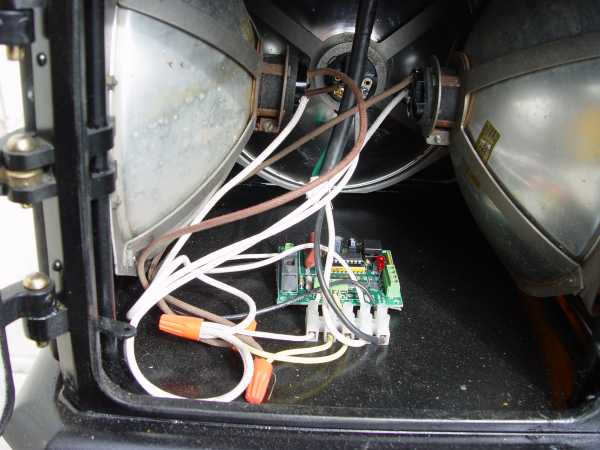Willis Lamm's
|
| Eagle Signals, Part Six |
| Eaglelux "All Yellow" Beacon |
Clicking on a picture will bring up a larger view in a new window.
Steel lens retaining ring.
|
"KA-341" ID tag on bottom plate.
|
The ID tag on this beacon shows a patent number of 2,294,883. Research by the SignalWiki Project showed this patent to have been issued in 1942. While this particular design dates back into the 1930s, if the bottom plate is original to this signal, it was likely produced in the 1940s but not during the years that aluminum was rationed for the war. |
| All Yellow Beacons |
|
In the early days of traffic signals beacons were used to indicate dangerous intersections, either with or without traffic policemen to direct traffic. The earliest beacons were powered by acetylene. When electric devices were developed, two basic designs emerged. "Mushroom" lights were installed in the pavement to indicate the centers of intersections. In other instances electric beacons replaced the acetylene beacons and were either mounted on pedestals or hung over the centers of intersections on span wires.
Traffic engineers in the beacon "camp" were divided into two groups, one preferring steady illumination and the other preferring "flickering" (flashing) beacons. Eventually the flickering side won out with most beacons flashing at a rate of 50 to 60 flashes per minute. Through the mid 1940s beacons were sold with all yellow lenses, two yellow and two red lenses, or all red lenses. Back then a flashing yellow light meant that traffic could only enter an intersection when it was clear of other traffic. Eventually engineers decided that any intersection that was sufficiently busy to warrant a beacon should indicate priority of right-of-way. From that point on beacons had red indications on at least two sides (equivalent to stop signs) or red indications on all four sides (equivalent to a 4-way stop.) |
| Electronic Flasher Module |
|
Many of these older beacons flashed at a rate of 50 flashes per minute. Since I didn't have a 50 FPS flasher available, I asked Joe Peppard of Joez Garage to produce a 50 FPM flasher, which he did at a very reasonable cost. I also installed a terminal strip so that if wires snag on each other when swinging out a reflector, they won't pull on the electronic module.
A video of the beacon in operation and a discussion on old beacons can be viewed on YouTube. |
Flasher module and terminal strip.

Brass hardware
|
Bench testing before installing visors.
|